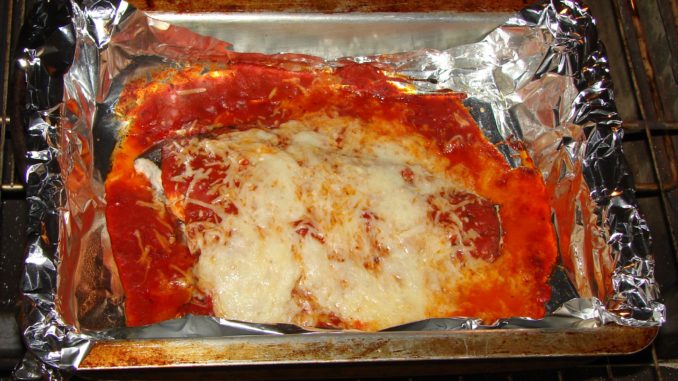
Try this recipe to spice up a summer flatfish
I’ve said this several times, but it bears repeating — September is the toughest month of the year to decide on a recipe. That really shouldn’t be a surprise though; fall begins in September, and with it there are all kinds of hunting and fishing opportunities for sportsmen in the Carolinas.
Fishing options range from mountain trout streams and lakes to the Gulf Stream. There are opportunities and possibilities to catch most species of fresh and salt water fish.
After several months of relative inactivity, sportsmen really look forward to September. Deer season opens in most areas of both states, doves, Canada geese and marsh hens come under fire, and North Carolina even opens a short season along the coast dedicated to teal.
After a lot of thought, this month’s recipe became an unusual way to prepare flounder. This is the time to catch some of the largest flounder of the year, and the weather is a little easier on fishermen than hunters. In addition to being the time for fatty flatties, this is also a good time to catch numbers of fish.
Some of the flounder that didn’t quite make the grade this past spring have added that extra inch and can be invited home. Not everyone fills limits, but the catch increases from a pair or two to near the limit. Flounder have been feeding hard all summer, and even the ones that are barely keepers are thick.
I enjoy hunting too, but September is a warm month, and I’d rather be on the water than sweating and slapping mosquitoes in a dove field or the deer woods. We’ll come back with several fun and tasty ways to prepare game later during the fall, but for this month, the quarry is flounder, so slap on some sunscreen and head to your favorite flatfish lair to collect the main ingredient.
Flounder Parm
This is a recipe that got its start during a conversation about how to add flavor to baked flounder. Flounder is such a mild-tasting fish that it doesn’t have much taste on its own. When you fry it, you add the flavor of the breader, with the salt, pepper and other spices, and the oil in which you fry it. However, unless you stuff a flounder, you are going to bake, broil, or grill, it can taste pretty bland.
I like fried fish occasionally but try not to eat fried foods very often. That means I eat a lot of baked, broiled and grilled fish, and that’s not a bad thing. However, after eating mackerel, grouper and such, the flavor of flounder can be pretty tame.
I rarely fish specifically for flounder but often catch some while fishing for puppy drum or trout, and I enjoy spending an occasional evening in the backwaters gigging flatfish. That’s a treat in itself, and the flounder are icing on the cake. However, this means we often have flounder for dinner, and my wife and I look for ways to add to their mild flavor without overpowering it.
This recipe was my wife’s idea. Whether you like it and want to praise it, or don’t and want to complain, the credit or blame goes to Donna Mooneyham.
She was the one who said, “Why don’t we fix a flounder like Parmesan chicken? They are both white meats with light flavor and should taste similar.”
I believe it was a good idea. The marinara sauce penetrates the flounder and gives it a slightly Italian flavor. Lightly sprinkling Italian bread crumbs on the marinara under the cheese helps accentuate this.
We even considered serving it on pasta, but we like to cook the whole body of the flounder, not just the fillets, and there is a chance of bones, so we didn’t. If I ever cook this with fillets, then I might try it over pasta. My first thought for the pasta is spinach spaghetti.
This version was served on a plate with sides. It was made with a simple marinara recipe we make occasionally and keep in the fridge for use as needed. However, it could be made with a prepared marinara, and those come in several flavors. If you decide to make your ownmarinara the key is to blend it just enough to be smooth, but not pureed.
I sometimes get carried away with the cheese, but it’s not necessarily bad. Cheese is sort of like bacon in that it’s hard to have too much.
My final caution is to be sure not to overcook this. If cooked to the point the flounder dries out, it won’t be good. It should be eaten as quickly as it cools enough and is ready when a fork will easily slide through the thickest part near the backbone.
Enjoy!
INGREDIENTS:
1 flounder, 16 to 19 inches, scaled and cleaned with head and tail removed;
1 cup marinara sauce;
2/3 cup grated mozzarella cheese;
1/4 cup grated Parmesan cheese;
Salt and pepper to taste;
Olive oil;
Italian bread crumbs (optional).
For marinara sauce:
2 cans stewed tomatoes;
1 can tomato paste;
3 tbsp chopped parsley;
1 tsp minced garlic;
1 tsp oregano;
1/3 cup finely diced onion;
1/2 cup white wine;
Olive oil;
Salt and pepper to taste.
PREPARATION:
To make your own marinara sauce, use a food processor or blender to blend tomatoes, tomato paste, parsley, garlic, oregano, salt, and pepper. Do not puree, but blend until smooth. Lightly drizzle some olive oil on the bottom of a large skillet. Put the onions in the skillet and use medium heat to glaze them in the olive oil for about 2 to 3 minutes stirring often. Stir in the tomato and spice blend and the white wine. Simmer for 30 minutes, stirring occasionally. This marinara can be used immediately, but much like spaghetti sauce, it picks up more of the spices and has a fuller taste after cooling and being reheated. It can be made in advance and stored in the refrigerator.
Scale and clean flounder, remove head and tail. Score flounder several times from back to belly and several times lengthwise on thick (dark) side only. Line a baking pan with aluminum foil and lightly coat the foil with olive oil. Preheat oven to 350. Place the flounder in the pan thin (white) side down. Pour marinara sauce over flounder, being sure to cover all of the flounder. At this point, if you choose to use Italian bread crumbs, sprinkle them on the marinara. Cover the flounder with mozzarella cheese. Lightly sprinkle the flounder with parmesan cheese Bake the flounder at 350 for 12 to 18 minutes. The time will vary with the thickness of the flounder. It is ready when a fork will easily slide through it at its thickest point. Be careful not to overcook and dry out the flounder. Remove the flounder from the oven and let it sit a few minutes. Use a spatula to remove pieces of the flounder for serving. Serve the flounder with a green salad and steamed or stir fried mixed vegetables. While this was prepared inside, it can be cooked on a grill and many September evenings are just right to cook and enjoy dinner on the deck or patio.






Be the first to comment